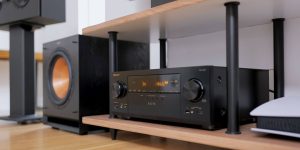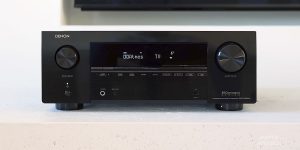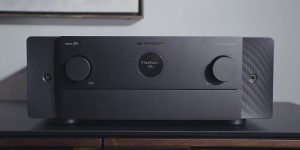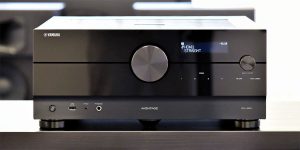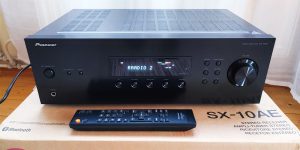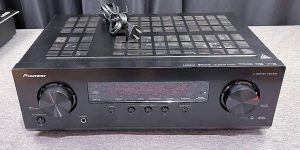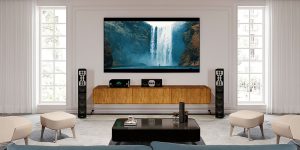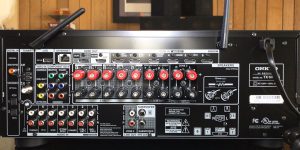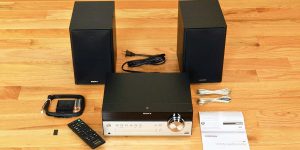My article compares and evaluates the opposition between two brands, Denon vs. Pioneer, which are popular among users. For this purpose, I have selected the most optimal receivers of both manufacturers in different price segments, from entry-level models to premium class, so that you can clearly understand the difference and make your choice easier. I will try to be objective so as not to influence your opinion because the main thing in using any equipment is your comfort and pleasure. And when it comes to AVR, we usually evaluate its sound and functionality. To begin with, I’ll tell you what my choice of models is based on and introduce you to the manufacturers a little closer. Well, here we go.
Brief history of Pioneer
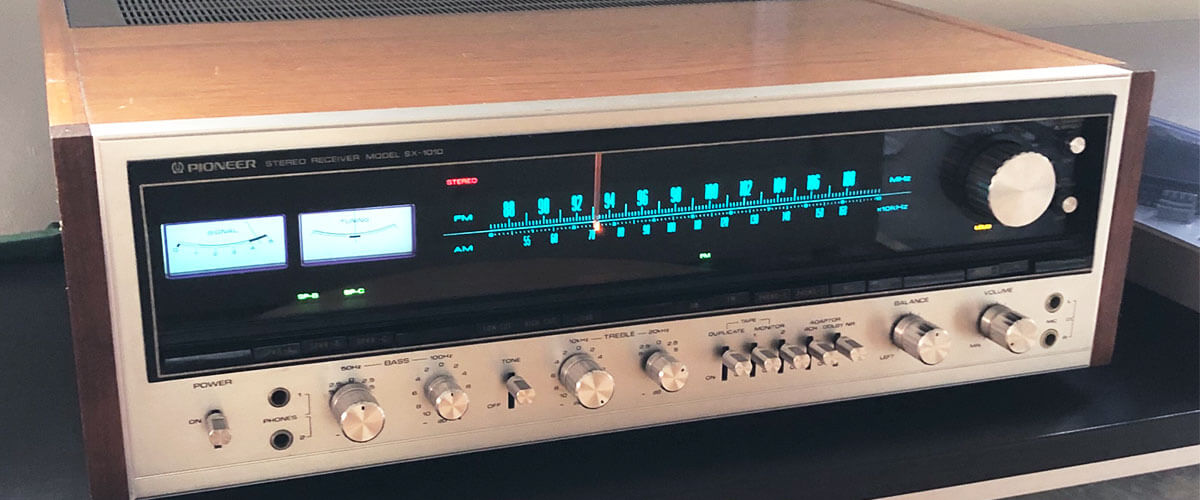
The company, which later gave birth to a huge amount of equipment under the Pioneer brand (the company received this name in 1961), was originally called Fukuin Shokai Denki Seisakusho and was founded by Nozomu Matsumoto, who in 1937 developed the industry’s first Hi-Fi dynamic loudspeaker. Initially, the speakers and stereo systems (in the future) were the company’s focus.
Since the 70s, Pioneer has been developing and snowing car audio equipment, including stereo, CD, GPS technology, receivers, and players. Subsequently, the brand’s product lineup has become increasingly broader but is still focused on the audio segment.
I assure you the history of the brand is varied and fascinating, so I recommend reading it in more detail at this link: the best Pioneer receiver.
Brief history of Denon
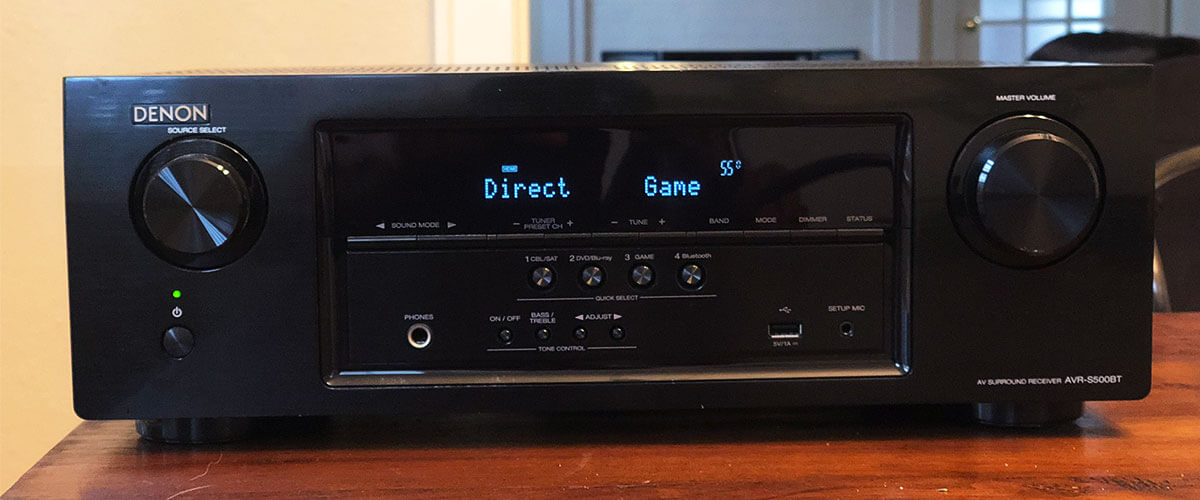
Nippon Chikuonki Shoukai (Japan Recorders Corporation) was founded in the East in 1910, but its founder was an American, Frederick Whitney Horne. Gramophones were the first thing the manufacturer created, so it’s no surprise that the company’s receivers are popular with audiophiles and are a great match for analog sound. The company Denon, which got its new name in the 30s of the last century, has been keeping up (and sometimes ahead) with the times for more than 100 years, producing high-end products and introducing the latest technologies (one of the first to master Dolby Digital).
For a more in-depth look at the history of one of the most popular AVR manufacturing brands, you can learn more here.
General sound differences between Denon and Pioneer receivers
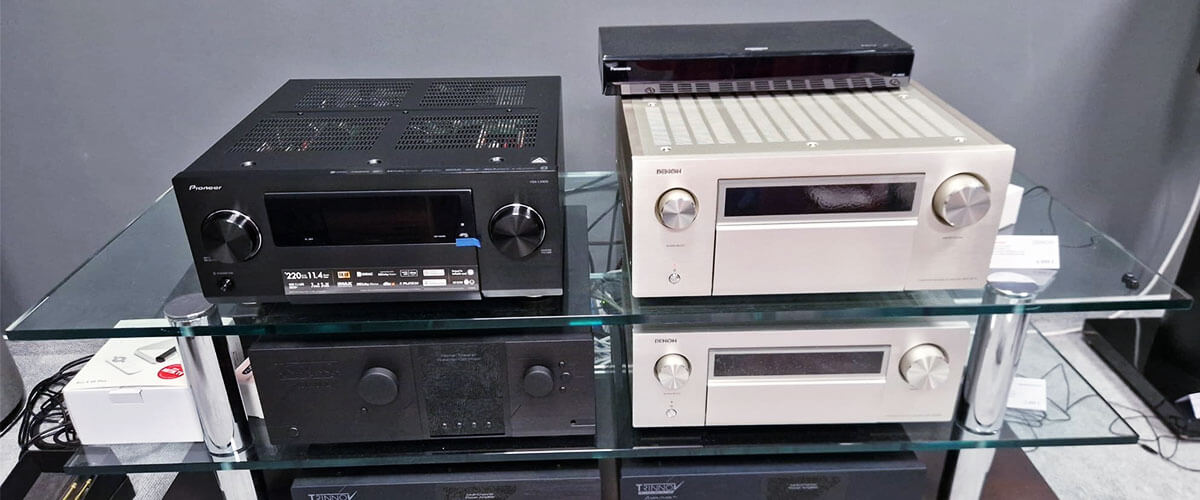
Comparing receivers of different brands can be a thankless task because it is very difficult to identify any common, pronounced sonic differences. They depend solely on your preferences and tastes. The overall sound picture is also influenced by the equipment you use to build your system, particularly speakers and cables, sources, and even the specifics of the room.
It is generally accepted that Denon has a warmer sound than Pioneer. But I know that most of you won’t notice the difference, unlike those like me who spend a lot of time with professional equipment.
Despite being in the same price range, Denon receivers tend to be slightly more expensive than Pioneer (you’ll see this in this review) for the reason of using more expensive internal details. But the general rule is that the sound of receivers in the same price category will be virtually indistinguishable (with proper setup/calibration).
So, it’s worth saying separately that the calibration system can also influence the final version. Audyssey from Denon is considered in user circles to be more adaptive than MCACC from Pioneer (it is more primitive, though it does its job). Modern models (Pioneer VSX-LX305, VSX-LX505, VSX-LX805) and Denon (AVR-A1H, AVR-X3800H, AVR-X4800H)) have implemented the more advanced, sophisticated, but accurate Dirac Live – one of the finest autocalibration systems available today.
Our criteria for choosing Pioneer and Denon receivers for comparison
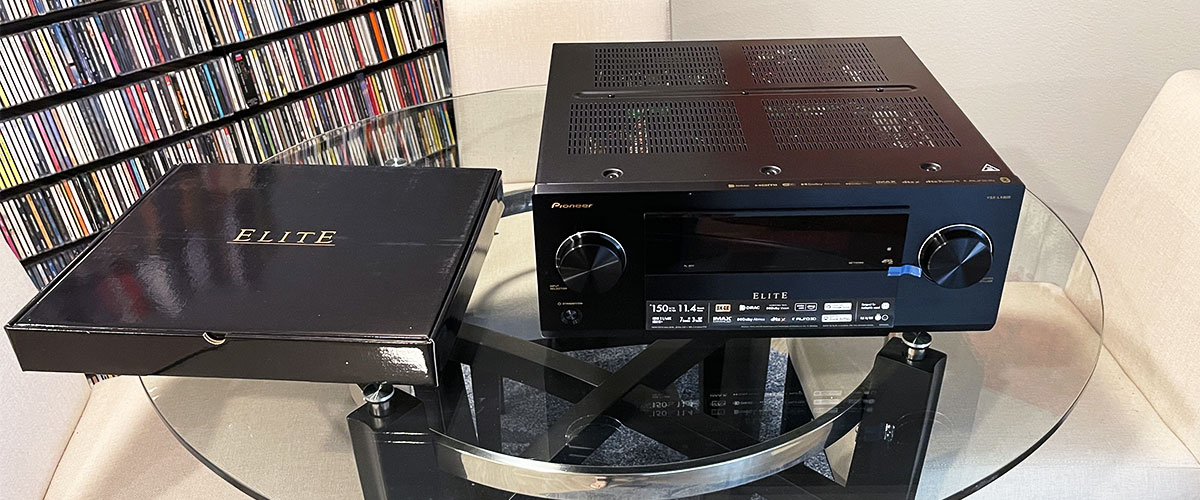
My criteria for choosing the greatest models in different segments were the following areas: listening experience, availability of necessary built-in features (support for modern video technologies, surround sound formats, Bluetooth, Ethernet/Wi-Fi/streaming services, etc.), sufficient number of inputs and outputs, and price.
Mid-priced Denon and Pioneer AVRs comparison
Pioneer Elite VSX-LX305 vs Denon AVR-X3800H
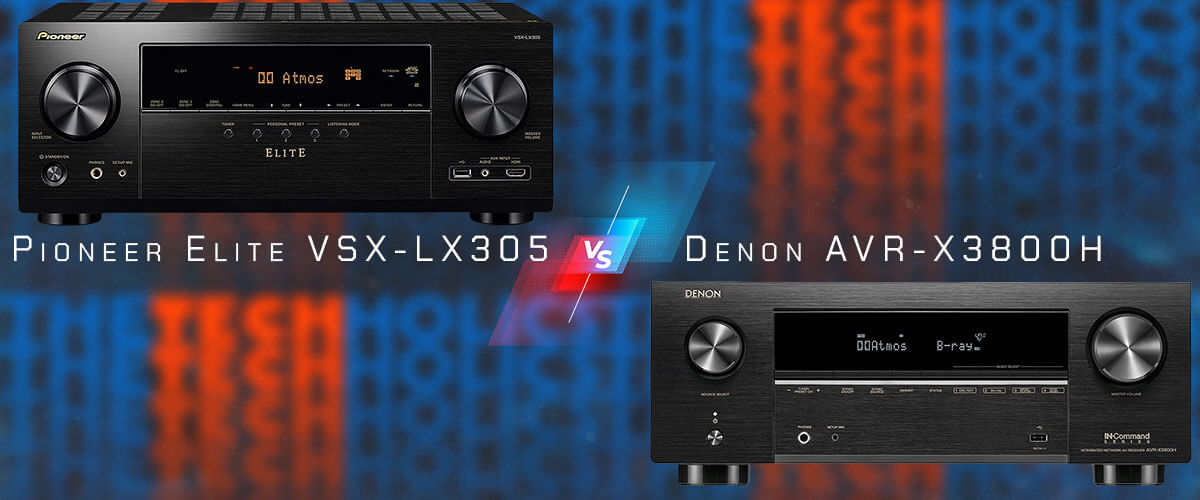
In my first Pioneer vs. Denon pair, the AVR-X3800H (2022) is the leader for quite objective reasons. With an initial configuration of 9.2, this receiver can add 4 independent subwoofers (VSX-LX305 has 2) and expand the system to 11 channels (which Pioneer does not have).
Denon also offers us a little more power of 105W (8 Ohm, 20 Hz – 20 kHz, 2 ch) against Pioneer’s 100W and support for Auro-3D surround sound format. Strangely, the Pioneer Elite VSX-LX305 2021 doesn’t have this format; usually, modern receivers are compatible with it.
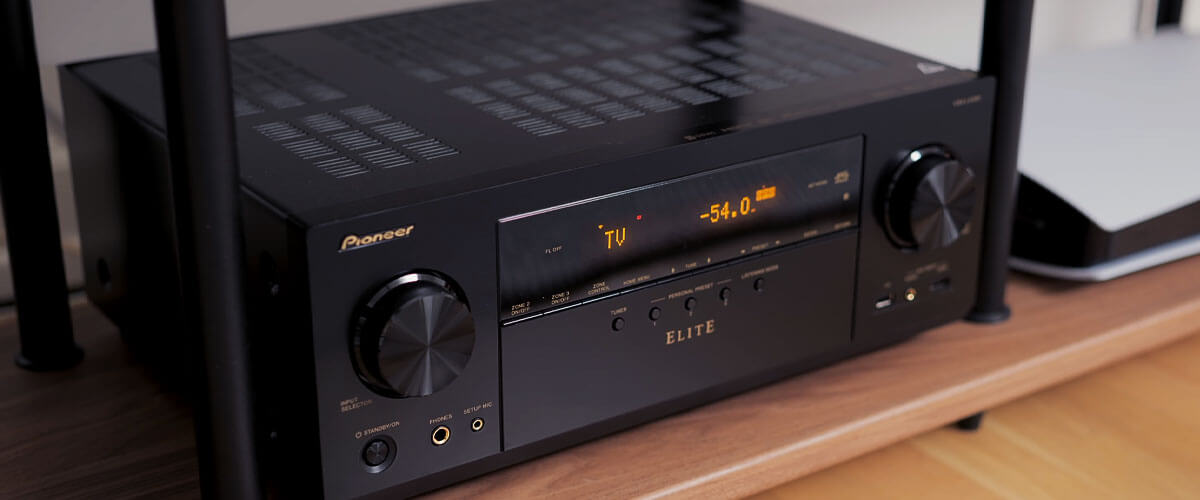
Pioneer has 1 more HDMI port: there is a front port, which is convenient, but it does not have version 2.1. And it also offers to work with slightly more High-Resolution Audio Formats via USB.
Meanwhile, the Denon has 3 zone multi-room, as opposed to the Pioneer’s 2 zones, which streams 8K video for MAIN and 1 zone and 4K for zone 2. Of the differences, it also works with Napster and SiriusXM.
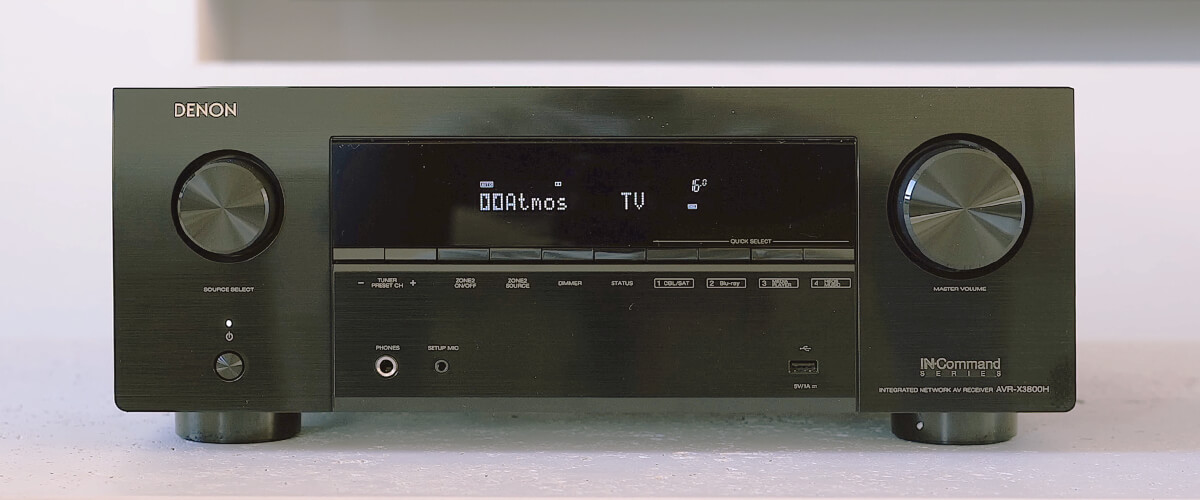
The VSX-LX305 vs. AVR-X3800H models are pretty similar, although there is a pretty clear Denon advantage in the area of system configuration and surround sound. Whether those advantages are worth a few extra hundred bucks is another matter for you to decide.
Pioneer Elite VSX-LX305 key specs
- Channels: 9.2.
- Power output: 100W/8 Ohm, 225W/6 Ohm.
- HDMI inputs/outputs: 6/2.
- Video functions: 8K/60Hz, 4K/60Hz, 4K/120Hz, HDMI upscaling up to 8K.
- Bluetooth/Wi-Fi: yes/yes.
- Streaming services: AirPlay 2, Spotify, TuneIn, Deezer, Tidal, Netflix, Amazon Prime.
- Supports: HDMI ARC, HDMI eARC, HDMI CEC, HDCP2.3, HDR10+, Dolby Vision.
- Surround sound: DTS HD Master, DTS Neural:X, Dolby TrueHD, Dolby Surround, Dolby Digital Plus, Dolby Atmos Height Virtualization, Dolby Atmos, IMAX Enhanced.
Denon AVR-X3800H key specs
- Channels: 9.4.
- Power output: 105W/8 Ohm, 135W/6 Ohm.
- HDMI inputs/outputs: 6/3.
- Video functions: 8K/60Hz, 4K/120Hz pass-though, upscaling up to 8K.
- Bluetooth/Wi-Fi: yes/yes.
- Streaming services: AirPlay 2, Spotify, TuneIn, Deezer, Tidal, Netflix, Amazon Prime.
- Supports: HDMI ARC, HDMI eARC, HDMI CEC, HDCP2.3, HDR10+, Dolby Vision.
- Surround sound: DTS:X, DTS Neural:X, DTS Virtual:X, Dolby Atmos, DTS HD Master, Dolby TrueHD, Dolby Atmos Height Virtualization, Dolby Atmos Music, Auro 3D.
Pioneer Elite VSX-LX305
Denon AVR-X3800H
Premium Denon and Pioneer AVRs comparison
Pioneer Elite VSX-LX805 vs Denon AVR-X6700H
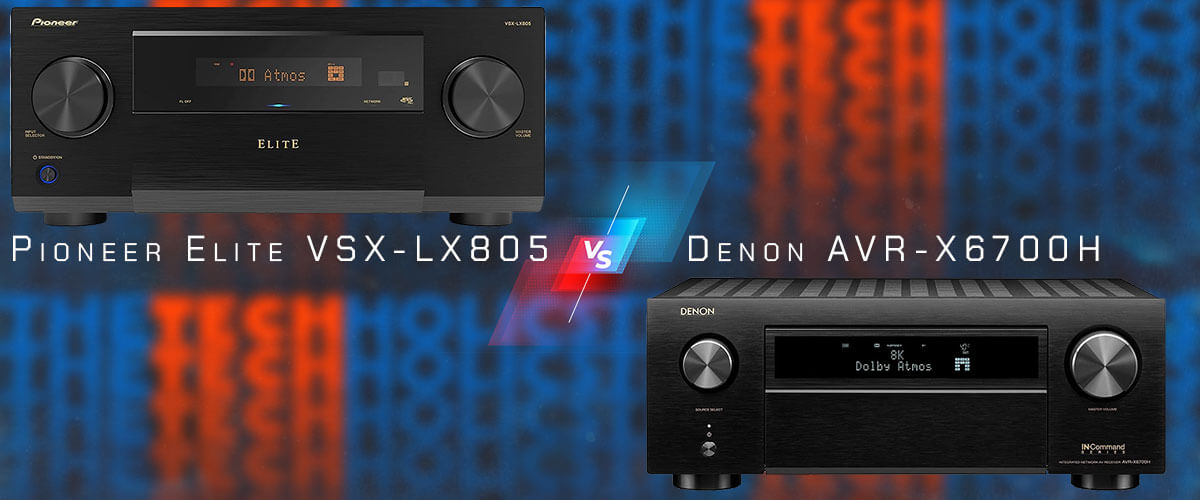
In this segment, the receivers are even more similar to each other and even have identical prices, although Denon surpassed the competitor in the area of system capabilities. The AVR-X6700H can be expanded to 13 channels. But VSX-LX805 has 4 subwoofer outputs and 150W (8 Ohm, 20 Hz – 20 kHz, 2 ch) versus 140W (8 Ohm, 20 Hz – 20 kHz, 2 ch).
In the video area, there are no particular differences. Still, since this Pioneer model was released later, in 2023 (Denon in 2020), it has more HDMI ports with version 2.1 (6 vs.1). So if you want to connect more sources to stream 8K video, it’s definitely not the AVR-X6700H. With it, you’ll have to switch them by turning it every time. At the same time, Denon has more other ports for connecting appliances via other connectors.
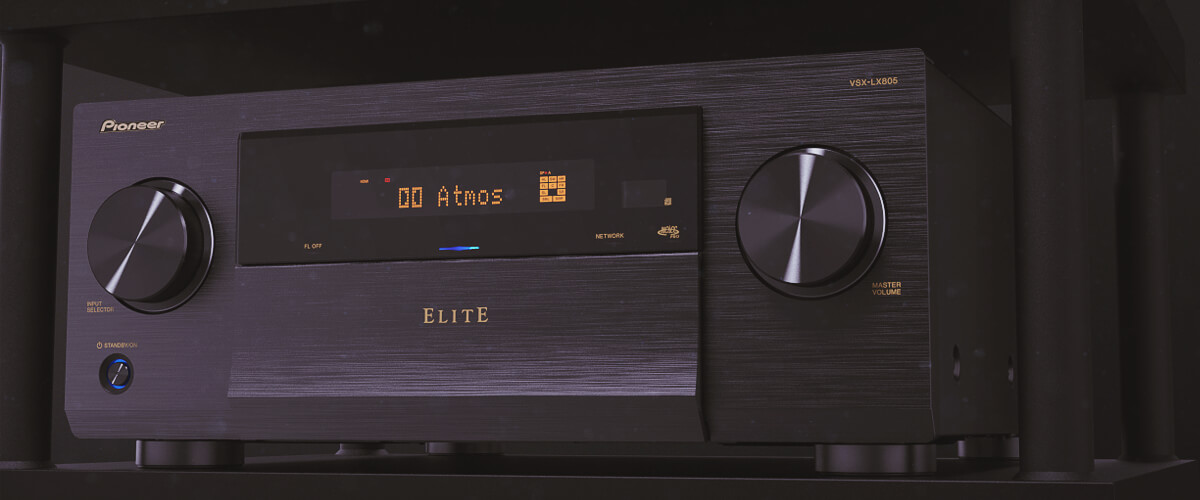
In the surround sound area, the AVR-X6700H has the ball again. It decodes soundtracks such as DTS Virtual:X and Dolby Digital EX, which avoids using equipment built into the ceiling in 9.2, 9.2.2, and 9.2.4 configurations. Pioneer can’t do that.
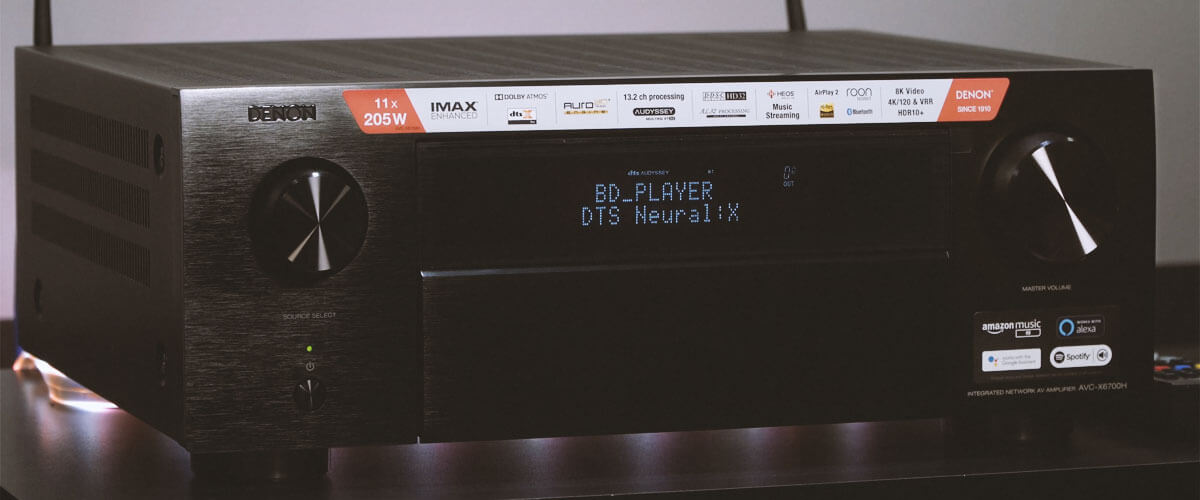
It’s hard to say which of the receivers came out victorious in this Pioneer vs. Denon contest. There are no cardinal differences between the Pioneer Elite VSX-LX805 and Denon AVR-X6700H. Also, both of them are IMAX Enhanced certified, which speaks to a very high score. And I’m sure you will also join the fans of these devices. They deserve it.
Pioneer Elite VSX-LX805 key specs
- Channels: 11.2.
- Power output: 150W/8 Ohm.
- HDMI inputs/outputs: 7/3.
- Video functions: 8K/60Hz, 4K/60Hz, 4K/120Hz, HDMI upscaling up to 8K.
- Bluetooth/Wi-Fi: yes/yes.
- Streaming services: AirPlay 2, Spotify, TuneIn, Deezer, Tidal, Netflix, Amazon Prime.
- Supports: HDMI ARC, HDMI eARC, HDMI CEC, HDCP2.3, HDR10+, Dolby Vision.
- Surround sound: DTS HD Master, DTS Neural:X, Dolby TrueHD, Dolby Surround, Dolby Digital Plus, Dolby Atmos Height Virtualization, Dolby Atmos, Dirac Live, Auro-3D.
Denon AVR-X6700H key specs
- Channels: 11.2.
- Power output: 140W/8 Ohm, 175W/6 Ohm.
- HDMI inputs/outputs: 7/3.
- Video functions: 8K/60Hz, 4K/120Hz pass-though, upscaling up to 8K.
- Bluetooth/Wi-Fi: yes/yes.
- Streaming services: AirPlay 2, Spotify, TuneIn, Deezer, Tidal, Netflix, Amazon Prime.
- Supports: HDMI ARC, HDMI eARC, HDMI CEC, HDCP2.3, HDR10+, Dolby Vision.
- Surround sound: DTS:X, DTS Neural:X, DTS Virtual:X, Dolby Atmos, DTS HD Master, Dolby TrueHD, Dolby Atmos Height Virtualization, Dolby Atmos Music, Auro 3D.
Pioneer Elite VSX-LX805
Denon AVR-X6700H
Budget Denon and Pioneer AVRs comparison
Pioneer VSX-534 vs Denon AVR-S660H
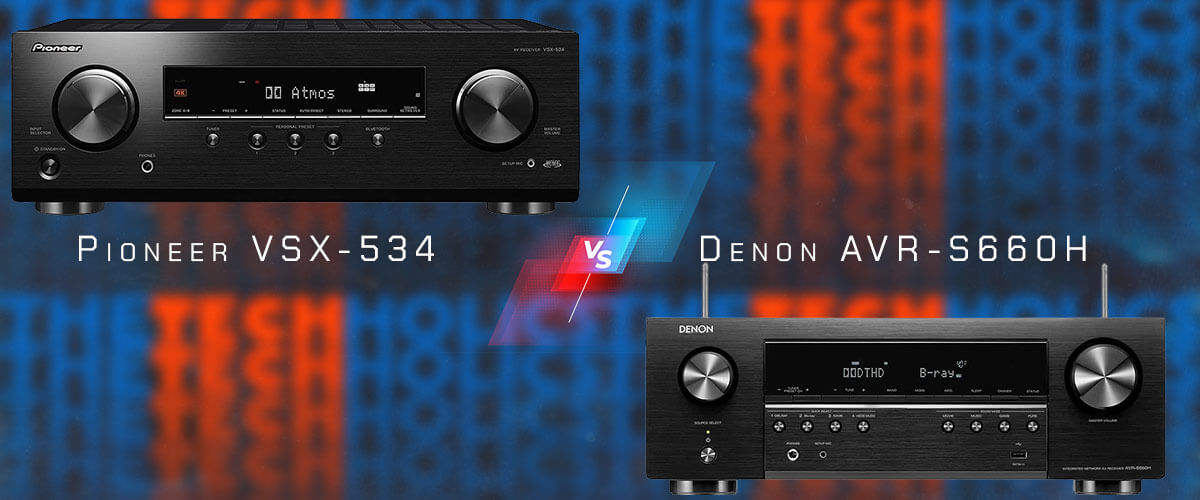
Quite an interesting pair in the low-price segment, let me tell you. The cost of Denon is almost 2 times that of Pioneer, though it’s clear why. The thing is that since the AVR-S660H was released in 2021, it is the owner of HDMI ports version 2.1. I emphasize this every time because such a connector guarantees you 8K video in HDR10 and HDR10+ (up to 8K scaling). The VSX-534 was released by the company in 2019, so you only get 4K video with it (Dolby Vision only), as well as scaling only to 4K. Also, the Denon AVR-S660H supports HDCP 2.3 copy protection, while the Pioneer does not.
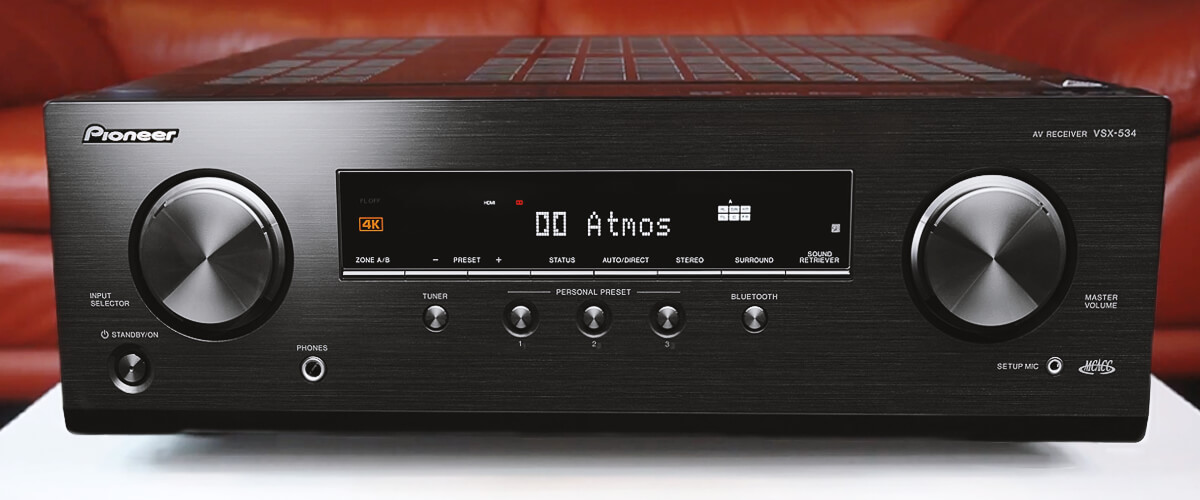
But it would be simple if it weren’t complicated. Pioneer has equipped its receiver with more power (80W vs. 75W). At the same time, in the characteristics of the model, you will find information that it can process Dolby Atmos and DTS:X surround sound. How so, you may ask? That’s simple – in the 3.1.2 configuration. Frankly speaking, you won’t get sound that will at least resemble the original sound of these formats, but you will be able to watch content with them.
The Denon has a lot more support for wireless connectivity: Amazon Alexa, internet radio, Pandora, Spotify, Tidal, Deezer, Napster, and SiriusXM, and has AirPlay 2 and multi-room HEOS options. And the Pioneer doesn’t even have Wi-Fi.
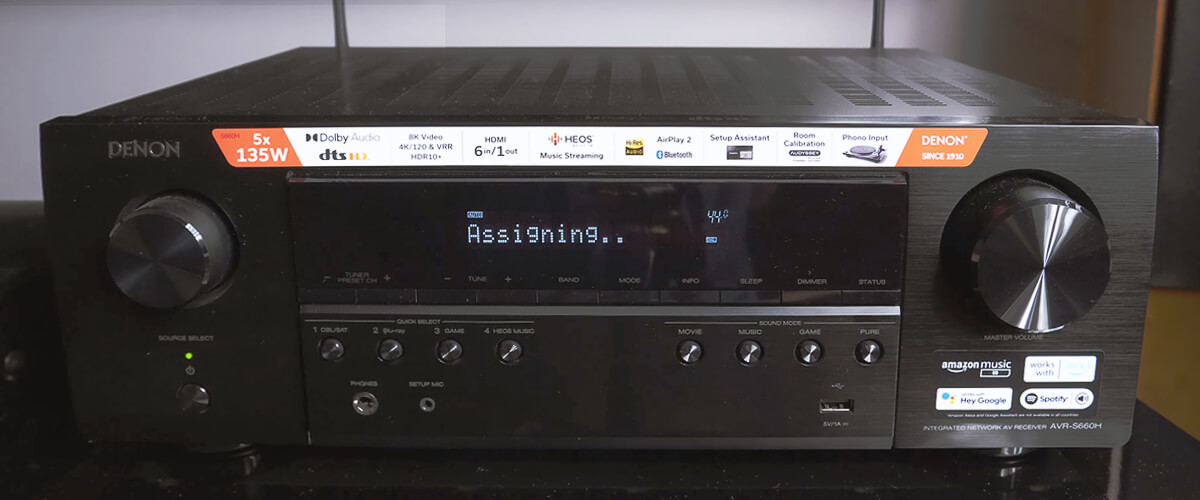
All in all, Denon or Pioneer is a tough choice, as far as I’m concerned, at least in this case. With Denon, you have more but also pay a lot more. With Pioneer, you have everything you need for an unassuming user, pay less, but lose the modern features that will prolong the device’s relevance.
Pioneer VSX-534 key specs
- Channels: 5.2.
- Power output: 150W/8 Ohm.
- HDMI inputs/outputs: 4/1.
- Video functions: 4K/60Hz, 4K/120Hz, upscaling up to 4K.
- Bluetooth/Wi-Fi: yes/no.
- Streaming services: has not.
- Supports: HDMI ARC, HDMI CEC, HDCP2.3, HDR10, Dolby Vision.
- Surround sound: DTS HD Master, DTS:X, DTS Neural:X, DTS Virtual:X, Dolby TrueHD, Dolby Digital Plus, Dolby Atmos Height Virtualization, Dolby Atmos.
Denon AVR-S660H key specs
- Channels: 5.2.
- Power output: 75W/8 Ohm.
- HDMI inputs/outputs: 6/1.
- Video functions: 8K/60Hz, 4K/120Hz pass-though, upscaling up to 8K.
- Bluetooth/Wi-Fi: yes/yes.
- Streaming services: AirPlay 2, Spotify, TuneIn, Deezer, Tidal, Netflix, Amazon Prime.
- Supports: HDMI ARC, HDMI eARC, HDMI CEC, HDCP2.3, HDR10+, Dolby Vision.
- Surround sound: DTS HD Master, DTS:X, DTS Virtual:X, Dolby Atmos, Dolby TrueHD.
Pioneer VSX-534
Denon AVR-S660H
Stereo Denon and Pioneer receivers comparison
Pioneer SX-10AE vs Denon DRA-800H
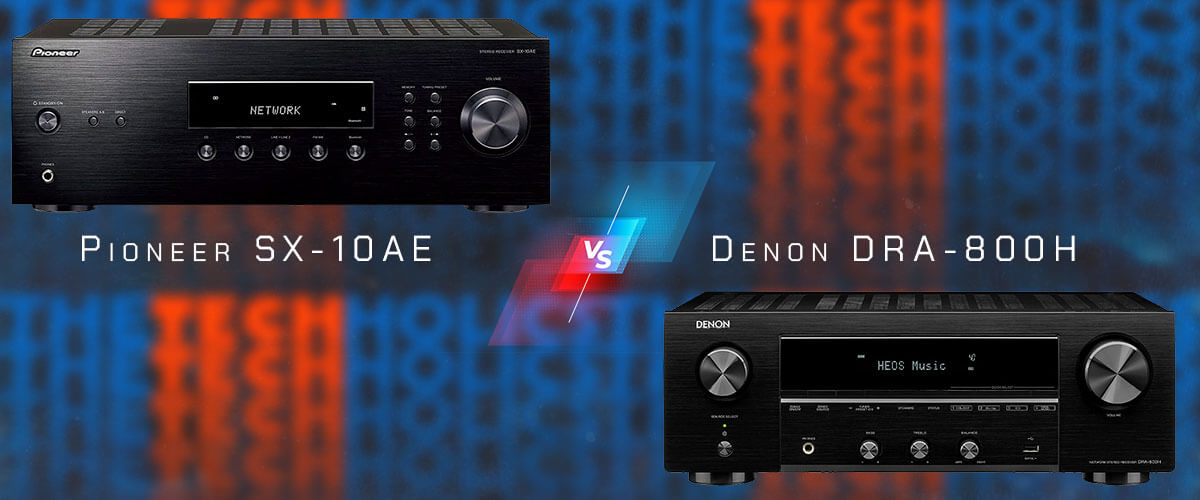
Well, as usual, I conclude my comparative review with stereo receivers. There is no winner in this Pioneer versus Denon category, as the models differ like night and day. Let me start with the fact that Pioneer SX-10AE is designed exclusively for music lovers. And Denon DRA-800H will suit those who do not want to bother with a home theater but like to watch movies with high (4K resolution) because it has 5 HDMI inputs (HDCP 2.3). And it also has a built-in MM phono preamplifier.
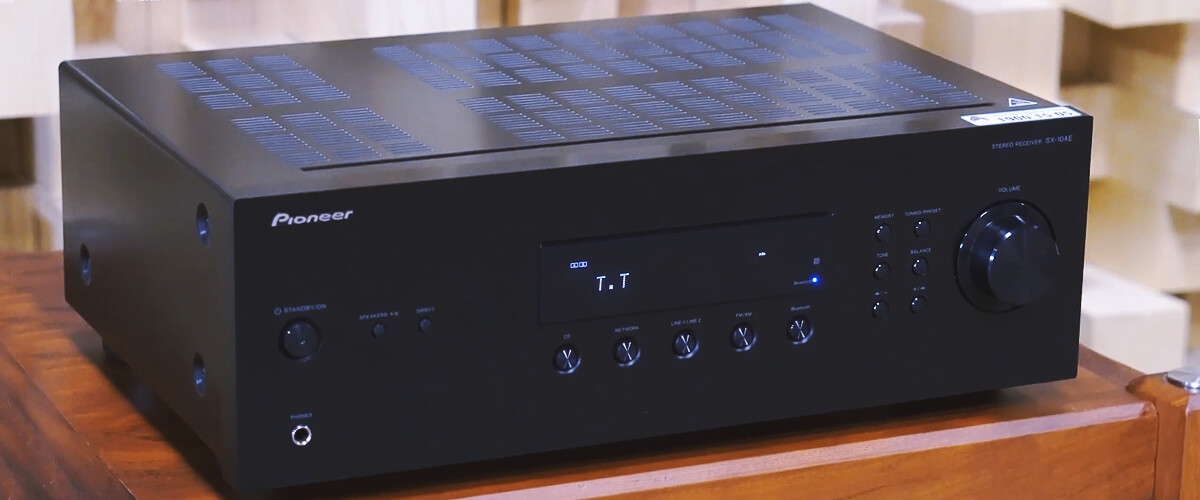
The Pioneer SX-10AE stereo receiver can be described quite briefly. Connect your CD player, network audio player, or smartphone via Bluetooth (supports SBC and AAC codecs) and enjoy high-quality music at 100W with THD 0.08%. You can also listen to AM/FM radio. All for the price of a steak at a restaurant.
The Denon DRA-800H broadcasts audio to 2 zones, has built-in wireless broadcasting to multiple HEOS rooms, has Wi-Fi and Bluetooth, and is compatible with streaming services and voice assistants.

When choosing between these two 2-channel receivers, you should weigh the question. It would seem that the functionality of the Denon DRA-800H wins on all fronts, but are all these features so important for you to pay much more for them when the Pioneer SX-10AE provides you with a high-quality music experience? It’s up to you to decide.
Pioneer SX-10AE key specs
- Channels: 2.0.
- Power output: 45W/8 Ohm, 85W/8 Ohm.
- HDMI inputs/outputs: 0/0.
- Video functions: 4K/60Hz, pass-through.
- Bluetooth/Wi-Fi: yes/yes.
- Streaming services: AirPlay 2, Spotify, TuneIn, Deezer, Tidal, Netflix, Amazon Prime.
- Surround sound: DTS HD Master, DTS:X, DTS Neural:X, DTS Virtual:X, Dolby TrueHD, Dolby Digital Plus, Dolby Atmos Height Virtualization, Dolby Atmos.
Denon DRA-800H key specs
- Channels: 2.2.
- Power output: 100W/8 Ohm, 120W/6 Ohm.
- HDMI inputs/outputs: 5/1.
- Video functions: 4K/60Hz pass-through.
- Bluetooth/Wi-Fi: yes/yes.
- Streaming services: AirPlay2, Deezer, Tidal, Pandora, SiriusXM, Napster, SoundCloud, Amazon Music, Amazon Music HD, Mood mix.
- Supports: HDMI CEC, HDCP2.3, HLG.
- Surround sound: has not.
Pioneer SX-10AE
Denon DRA-800H
FAQ
How do the price points of Denon and Pioneer receivers generally compare?
Which brand offers a more user-friendly setup process?
Which brand is known for greater durability and longevity?
We are supported by our audience. When you purchase through links on our site, we may earn an affiliate commission at no extra cost to you.
Our newsletter
* We will never send you spam or share your email with third parties

![Best Budget Receivers [Reviewed and Tested]](https://thetechholics.com/wp-content/uploads/2023/10/best-budget-av-receiver-300x150.jpg)
![Best 9-Channels AV Receivers [Reviewed and Tested]](https://thetechholics.com/wp-content/uploads/2023/10/best-9-2-receiver-300x150.jpg)

